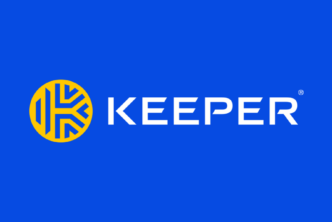Which project management methodology is ideal for your business? Waterfall? Or Agile? Is it really necessary to distinguish between the two and choose one to go with?
If these are the burning questions in your mind, you’re ahead of at least 39% of companies that don’t take project management methodologies seriously. According to a survey by Wellington, only 61% of the surveyed organizations mainly apply a defined project methodology to their projects. The rest either don’t use a project management methodology at all or use them occasionally.
Each methodology (including Agile and Waterfall) has its own set of principles and instructions that will take the guesswork out of your workflow. They help you tackle different aspects of your project, such as determining the project’s scope (project goals, deliverables, tasks, costs, and deadlines), defining and choosing necessary processes and tools, managing your team, and reviewing and presenting your work. That’s why it’s important to know their differences and how they help you complete your projects.
In this article, we’ll talk about what makes Waterfall and Agile methodologies so different and how they deal with different aspects of project management. We’ll also explain what methodology you should use for your projects depending on various factors. In the end, we’ll also describe a hybrid approach if you think it works best for your purposes.
Table of Contents
What’s a Project Management Methodology?
A methodology is a system of practices, techniques, procedures, and rules used by those who work in a discipline. A project management methodology uses such systems for delivering projects.
Due to their structured nature, project management methodologies eliminate the guesswork in your workflow and facilitate teamwork. Generally, they deal with core project management aspects: initiating, planning, executing, monitoring, and closing the project.
Different methodologies have different approaches to project management aspects, so each can influence your result differently. Before deciding on which methodology to use, take time to consider various factors with your development team. Do you have defined project requirements and expectations? Do you need to mentor the development team along the way? Do you have in-house developers, or are you working with a third-party development company? Do you need to make changes to your requirements during the development phase? All of these are factors that help you decide which methodology to choose for your project.
The most popular project management methodologies are:
- Waterfall, a traditional, linear methodology initially developed for hardware development.
- Agile methodology, that is more modern and has been designed by software developers.
Let’s discuss the differences between these methodologies.
Waterfall vs. Agile: The Main Differences
In a nutshell, the main difference between Waterfall and Agile methodologies is their flexibility to change during product development and how they deliver products. With Waterfall, you need to gather requirements, plan each step of your product development, and complete them without circling back. In Agile, you have more freedom to start with undefined requirements and resources, make changes in your plans, and deliver your project incrementally rather than as a whole.
In particular, Waterfall and Agile methodologies are different in four main areas:
- Planning processes and phases
- Product delivery
- Customer collaboration
- Responding to change
1. Planning processes and phases
Let’s see how each methodology approaches documenting processes in project management:
Waterfall
Waterfall is a linear approach, meaning that all requirements and phases for the project should be laid out during a planning phase (or requirement gathering phase) and followed one-by-one in product development. In this sense, a Waterfall approach strongly emphasizes planning requirements before implementation and documenting processes as rigorously as possible during product development.
After the plan is approved and a model is designed, the execution starts, and there is essentially little space for going back and making any revisions unless it’s essential.
Agile
As stated above, the first principle of Agile methodologies is individuals and interactions over processes and tools. In contrast to Waterfall, Agile gives more autonomy to people involved in the project. So instead of sticking to the requirements and processes planned upfront, individuals involved in the project are free to discuss the requirements in each step and/or change them as they consider fit. Agile welcomes changing requirements even late in the development process.
Agile also has a strong emphasis on interactions between team members to avoid confusion and keep communication synchronous. Face-to-face conversations are considered the best type of communication method, so employee engagement is an important factor.
For example, in Scrum, Agile framework, the development team should have four kinds of face-to-face meetings (such as short daily meetings) to reflect on their work process and plan ahead. Team members and customers can have access to requirements and plans and how they are completed through Scrum software.
2. Product delivery
Another critical aspect of project management that Agile and Waterfall methodologies differ substantially in is product delivery. Although both these methodologies aim to deliver a working product to the customer, they differ in delivering the product.
Let’s take a closer look at how each methodology approaches product delivery.
Waterfall
In a Waterfall approach, the product is developed during the “implementation” phase, a stand-alone phase that does not involve any inspection or analysis by the customer. The final product is delivered after the verification phase when the product is reviewed and analyzed internally to ensure it meets the customer’s requirements (although in most cases, the verification phase is skipped).
The philosophy behind this approach is that the customer knows exactly what they expect from the development team and that the development team can implement the customer’s expectations. That saves time for customers and allows the development team to have a more or less undisturbed workflow.
This level of structuredness demands clearly defined requirements and milestones to work, or the final product won’t be anywhere near the customer’s expectations.
Agile
In contrast to Waterfall, Agile is more open to uncertain requirements and milestones. A project can start only with a tentative outline of what the end product needs to look like or how it needs to function. The development team can implement the customer’s plan as they consider fit and work with the customer to develop a product that satisfies them.
To make this possible, the development team needs to deliver the product in smaller increments or batches. Once the first increment is delivered, the development team typically holds a meeting with the customer to receive their feedback and improve the product further. The delivery is done iteratively as well. Before the next increment begins, the development team needs to plan the requirements again and revise the older plans if necessary.
For example, in Scrum, the whole project is divided into different phases (Sprints) that need to be planned and completed separately. The development team holds Sprint planning meetings and discusses what needs to be delivered to the customer and how it contributes to the end product.
The development team then holds daily meetings (called daily Scum) during the development phase, and each team member discusses their progress and any issues they experienced. Once the end product of the Sprint is complete, the development team holds a Sprint review meeting with the customer and presents the batch they have completed during this Scrum. The customer then reviews the results and gives feedback. Check out a guide on Scrum meetings to learn more.
Customer feedback is essential in Scrum as it clarifies the next steps the development team should take towards completing the end product. Using an Agile product management software could help a lot here.
3. Customer collaboration
Before any project is started, the development team is expected to discuss requirements and the expected results with customers. The ultimate goal of any project management methodology is to satisfy the customers with a functioning product.
Waterfall
It helps to know that one of the basic principles of the Waterfall approach is lower customer involvement. The rigorous gathering of requirements in the planning phase and detailed documentation of the processes during implementation ensure the customer does not need to waste any time reviewing the product and only receives the complete end product when it’s ready.
That is not necessarily a bad thing in software development. Some customers are frugal with their time, they prefer to skip numerous meetings with the development team and only give feedback on the complete end product rather than smaller batches.
Agile
By nature, Agile is more dependent on customer feedback, so it demands customers be more involved in the project. The most typical example is when after an increment of the product is delivered to the customer, they are expected to review the result and provide the development team with their opinion.
In Scrum, for example, the development team should hold Sprint review meetings with customers and present the result of the Sprint (or increment) they just passed. The project team and customers (alongside those who can provide valuable feedback) also discuss how valuable the current increment is to the end product, assess its quality, and determine future plans.
4. Responding to change
Change is inevitable in any project. Customers might change their minds regarding project requirements and expectations, or even your team might conclude that the plan they’re following has some issues that might harm the end product. So a project management methodology that does not leave room for a change of plans is not ideal in many cases.
Here’s how Waterfall and Agile methodologies respond to change.
Waterfall
The biggest issue people have with a Waterfall approach is that it strictly follows the project plan and leaves no room for change. Once the requirement gathering and designing phases are passed, your development team should move to the next stage and proceed with the plan.
There is actually a value in having rigorous plans. In some cases, your customers know exactly what they want from you. Usually, it works well for small projects when you have an exact model of the end product you want to make. Or in some cases, the customer can’t give an opinion about the product unless they receive the complete end product. However, in most cases, especially for more extensive and complicated projects, it’s impossible to avoid any change of plans, so you might need to expect changes and make room for them.
Agile
Agile methodology is known for accepting change in any phase of product development, so many project managers are interested in it. Responding to change is mentioned as one of the items in the Agile manifesto: “Responding to change over following a plan”, and as one of their main principles: “Welcome changing requirements, even late in development. Agile processes harness change for the customer’s competitive advantage.”
This level of responsiveness to change is made possible through numerous meetings both within the team (project manager and the development team) and outside the team (the project team and clients or any other stakeholders). These meetings aim mainly to assess the current work, offer feedback and adjustments, and plan for the next iteration.
Which Methodology Should You Use?
By now, you should know that each methodology has its specific principles. Once you know the core principles of Waterfall and Agile methodologies, it’s easier for you to identify how you can take advantage of these methodologies for your projects.
What is the Waterfall approach suitable for?
Waterfall is a kind of methodology that lays great emphasis on rigorous planning (functional requirements, deliverables, features, deadlines, costs, and so on) and modeling before implementing. So it makes sense that it’s not ideal for clients that are not completely sure what they expect from you. Also, they are not suitable for big and complicated projects that demand a great deal of customer involvement before being released.
In general, as Suzanna Haworth explains, the Waterfall approach is suitable for:
- Projects where you’re working with other organizations or remote workers (because everything is clear-cut and there is no room for confusion)
- Projects with a fixed scope, time, and budget
- Smaller, well-defined, and simpler projects
- Projects with an absent client.
Since a Waterfall approach is dependent on clearly defined processes and tasks, it’s a good idea to take advantage of visual timelines that could show the tasks and processes in their assigned periods. A Gantt chart maker software contains all these features you need for this.
What is an Agile approach suitable for?
Agile is essentially the approach that delivers the product incrementally and iteratively. If you deliver your product only in increments (or batches) but not in iterations (that is repeating the process of planning expectations and requirements for each increment), you’re still following a linear approach. An Agile approach should repeat the whole process for each increment, thus making sure that every adjustment or change is accounted for in the next increment. That is how each increment looks like in an Agile approach.
It’s also important to note that, customer has an important role in an Agile methodology. Their feedback is essential for planning each iteration. So, an Agile approach is not ideal for clients who prefer to stay out of the development process and only give feedback once the product is complete.
Generally, as Suzanna Haworth explains, an Agile approach is suitable for:
- Projects where your organization is responsible for the whole process
- Projects with scope for changing requirements
- Larger, undefined, complex projects
- Projects with an involved client
Finally: the case for a hybrid approach
When it comes to choosing a project management approach to apply, what’s important is how it helps you deliver a valuable product and satisfy your clients. That’s the only criterion you need for choosing a methodology. Because in reality, sticking to each and every detailed principle in a methodology might not even be possible.
You need to consider various factors and use a methodology that works best in your situation. How does your client like to be involved in the process? Does your client expect detailed projections on deadlines, budget, features, etc., before the project begins? How does your team interact with each other? Are you working with a remote team from different time zones, or do you have an in-house team? And many more questions that need to be answered before you decide on a project management approach.
In some cases (we would even say in most cases), you might need to choose a hybrid approach rather than stick with a one-size-fits-all methodology. For example, you might need to define some requirements before the project begins to align your goals with your clients while leaving detailed planning to different iterations. Or you might need to deliver the product incrementally and iteratively, but your client might prefer to review the increment results in the form of reports and documents rather than involve actively in each phase. You can provide them with the reports while making sure they attend the core review and planning meetings with your development team. It also helps to engage them in the workflow by allowing them to collaborate on the documents and reports you share with them. Flippingbook’s teamwork features make it easy to do so.
Wrapping up
Your choice of methodology depends a great deal on your client preferences, the product requirements, and your own development team’s capabilities. After reading the article, you can match your project needs to the principles and functions of each project management methodology, and decide which of them works better for your requirements, or use a hybrid approach to mix the suitable principles of each approach for your project.






